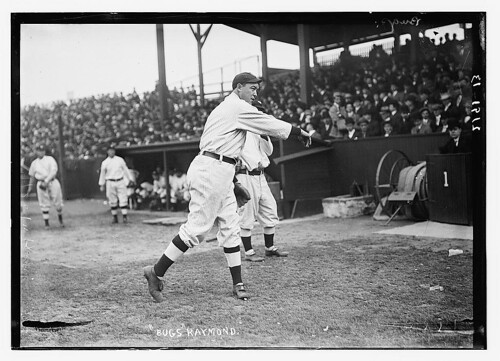Another week and another day of rain. I can remember a couple of days of sunshine this year so far if I try really hard and it’s putting me and everyone else I know in one of those perpetual bad moods. Even my cat is getting depressed and we both wonder when, if ever, the sun will shine for more than a day or two. Global warming has been replaced by global rain. If my hometown still had its Triple-A baseball team, we would be in line for doubleheaders every day until Christmas. Which I suppose would be only a couple of days after the World Series ended if Bud Selig and Fox had their way.
Ah but let’s cheer up and talk about what has been happening in the majors after almost two months of the 2011 season.
The Cleveland Indians are still winning most of their games and nobody can really figure out how they are doing it unless it’s because every team which signs Orlando Cabrera seems to do well when they didn’t before (except for his first team the Montreal Expos). Tampa Bay lost almost all of their players last winter and no one can figure out how they are winning game after game after game. Can Evan Longoria really be that good? The Cubs look awful even when they win (and are stuck with some terrible contracts (Fukadome, Soriano, Pena, Ramirez, Zambrano etc.) and Whitesox manager Ozzie Guillen, despite his team’s troubles, has been quiet. The Minnesota Twins without bad luck wouldn’t have any luck at all especially with Joe Mauer injured again, Justin Morneau still feeling the effects of last seasons’ concussion, and Joe Nathan with arm trouble again.
I watched the San Diego Padres today and recognized hardly anyone on the team. Albert Pujols is hitting like a mere mortal. Jose Bautista continues to be the best hitter in baseball and I keep waiting for him to revert back to the 4 A player he had been before. Jered Weaver continues to throw 120 pitch complete games just like in the olden days. Atlanta doesn’t give up any runs but can’t score any runs either but their pitching coach has been entertaining. Almost every young pitcher throws near 100 mph and home plate umpires seem to be finally calling true balls and strikes. No one is talking about the Florida Marlins. No one is going to see the Florida Marlins.
Billionaires Fred Wilpon and Frank McCourt are having money troubles and the former is publicly criticizing the very players he need s to trade and the latter is threatening major league baseball. Wilpon has sold a minority interest in the New York Mets even though he has billions in real estate holdings and Frank McCourt’s wife is yelling to anyone who will listen that the Dodgers should be sold. Major League Baseball keeps threatening to buy it. Fox wants to buy the Dodgers. Mrs. McCourt keeps yelling. Does this mean the Dodgers will be moving to Puerto Rico next season?
Bryce Harper was found to have had vision problems throughout his career. What is he going to do now that he can see? A couple of the potential top draft picks on June 6 have publicly stated that they will not sign with the Pittsburgh Pirates or Kansas City Royals but would consider it, maybe, for a $30 million contract. That sounds more than reasonable although the Pirates are near .500 and the Royals recently brought up Eric Hosmer to save the franchise. He has turned into a Yankee killer much to the delight of non Yankee fans everywhere. Pete Rose wants to manage again. Maybe Triple A Las Vegas?
Maybe it’s all the rain and late October type weather but most of the preceding seems to make little sense or is a pleasant surprise to me. I can’t tell which. Oh yeah, don’t forget to vote 25 times for the All Star of your choice. Maybe federal elections should be run the same way.
I must mention, very sadly, the passing of Harmon Killebrew. Harmon looked like a warehouse worker and hit like a Hall of Famer. A great player and from all accounts, a wonderful man and ambassador for the game. He will be missed by everyone. My condolences to the family.
 Fans who’ve read Lawrence Ritter’s The Glory of Their Times or watched the Ken Burns Baseball miniseries, may be familiar with Raymond, who pitched six years in the majors between 1904 and 1911, going 45-57 with a 2.49 ERA. Former New York Giants teammate Fred Snodgrass told Ritter, “Bugs drank too much and came to an early tragic end, but when he was sober, and sometimes when he wasn’t, he was one of the greatest spitball pitchers who ever lived.”
Fans who’ve read Lawrence Ritter’s The Glory of Their Times or watched the Ken Burns Baseball miniseries, may be familiar with Raymond, who pitched six years in the majors between 1904 and 1911, going 45-57 with a 2.49 ERA. Former New York Giants teammate Fred Snodgrass told Ritter, “Bugs drank too much and came to an early tragic end, but when he was sober, and sometimes when he wasn’t, he was one of the greatest spitball pitchers who ever lived.”